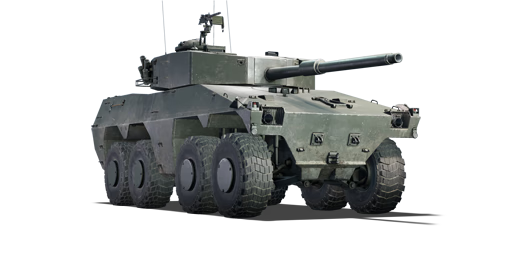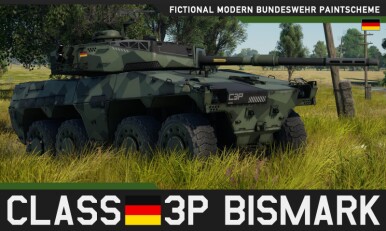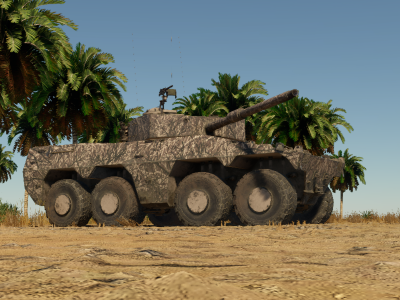The Class 3 (P), also known as the TH800, was a heavily armoured wheeled combat vehicle developed in the early 1980s by Henschel Wehrtechnik, competing in a South African Army competition that called for a new wheeled AFV. The TH800 was the heaviest of the TH series prototypes, weighing a considerable 41 tons, and was intended to be used as a multi-purpose platform that could carry an anti-tank gun, AA cannons, SAMs, or even a 155 mm howitzer. The Class 3 prototype would ultimately lose to the lighter Rooikat and would not be accepted into South African service. The massive Class 3 (P) was later exhibited at the Bloemfontein War Museum.
The Class 3 (P) was introduced during Update "Hot Tracks" as a reward for the 2020 Operation W.I.N.T.E.R. event. The most notable aspect of the Class 3 (P) is its outstanding size, as well as the similarly exceptional armour (and therefore weight) for a wheeled vehicle. These two traits give the Class 3 (P) good survivability against autocannons and even poorly aimed tank rounds, though the size of the vehicle precludes a stealthy playstyle. Despite its enormous size and weight, the Class 3 (P) is surprisingly mobile, with a top speed of 86 km/h in RB. The Class 3 (P)'s main armament is a fully stabilised 105 mm GT-3 cannon, providing it with sufficient firepower to engage most enemy vehicles it will face.
















